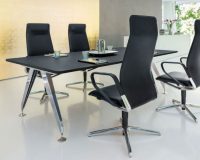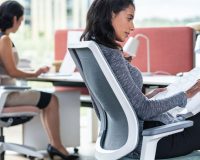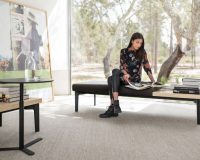When people talk about the pace of change in the modern world, they often refer to the speed at which technology develops. In fact, almost every aspect of the world in which we live is subject to near continuous change. In the case of office design, the world is shifting very quickly indeed.
The past twenty years in particular have seen a steady and profound revolution in every aspect of the way that we produce and design offices, retail environments, public spaces and hotels. The forces that are driving this revolution are wide ranging and complex and include the materials, technologies and services offered by suppliers as well as the attitudes, demands and behaviour of buyers.
The constant state of flux in the market means that it pays for buyers to understand the impact that office design can have on their business. Often, it is the growing sophistication of clients that is the key driver of change. But the technology and materials available to them are moving so quickly it also means they may sometimes underestimate the choices they have.
Staying ahead of the game
Of course, there is a constant pressure to stay one step ahead of the game, with many interiors being redesigned every few years and with minor changes happening all the time. Businesses want to engage in a number of ways both with their employees and customers as well as other stakeholders, and one of the ways in which they achieve that is by making a visual impact with interior design.
This is most obviously manifest in the way in which facilities managers talk about what they want from an office design. The emphasis has switched to choice including those about branding, identity, colour and finishes along with the ability to constantly innovate and provide new perspectives. That is why the demands for artwork and branding that offer a range of aesthetics and finishes across a number of price points has been mirrored by innovations in design, materials and processes from their suppliers.
The push-me pull-you nature of this relationship has resulted in an unprecedented level of choice. But this brings with it some new challenges. The onus can shift to the buyer to understand how their business functions in order to make the most of the options open to them. But there is also a challenge for suppliers in terms of letting their clients know what is possible.
It is certainly the case that a company like Sedus at the forefront of office design thinking, has to work with increasingly sophisticated and knowledgeable clients. This change has become vividly apparent in the past few years and everybody must work together, share ideas and best practice and constantly strive to keep pace with changes in the market if they are to enjoy the benefits that the very best workplace design can deliver.
Making the right choice
This can be challenging given the choices people now have in terms of materials, designs and technology. Trying to grasp exactly how far materials and technology have come in the last few years makes a clear brief essential. Understanding needs in the first instance allows suppliers to provide solutions that are certain to meet those needs and in some cases exceed them.
It is also important for everybody to understand just how cost effective some solutions can be, especially in a competitive market with demanding customers who want to constantly be delighted by new ideas and inspiration. It is certainly possible to turn projects around increasingly quickly in response to new demands, but new technology also allows us to produce solutions at a price that makes changes to an interior commercially viable.
For example, as well as making a branding statement, graphics and signage can also provide solutions to other challenges of interior design. Wayfinding, which once was a voguish if not deal-breaking issue, has become a more important concern. Interiors can play an important role in providing visual wayfinding clues. Signs and arrows are not the only way of helping people orientate themselves in a space. It is also an important factor in meeting the demands of legislation, such as the Disability Discrimination Act in the UK.
The use of design elements to convey corporate identity and values as well as providing solutions to other business issues is something that encapsulates the increasing sophistication of the market. Branding used to be manifest in some pretty obvious ways, with logos woven into carpets, point of sale displays and banners with possibly the ubiquitous use of a small palette of corporate colours.
Now it is often much more subtle and even draws on disciplines such as neuroscience and anthropology to help create interiors that send messages to the people that inhabit and visit them.
There is no sign yet that this pace of change is about to slow. And nor should it. The increasingly sophisticated market offers benefits to everybody, not least customers who are able to enjoy better, more interesting, smarter, more colourful and more visually appealing office design.







